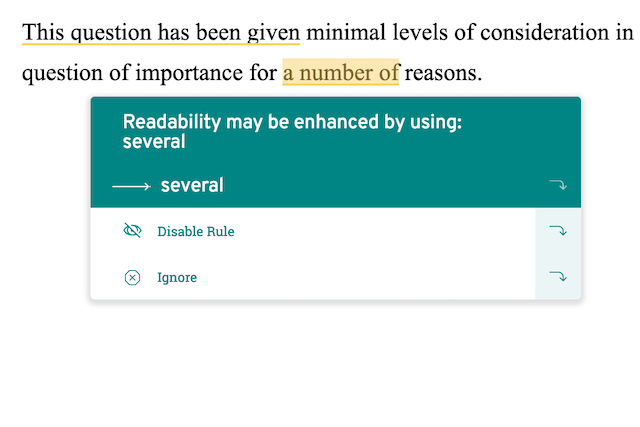
Ready to write your PhD proposal? It’s your opportunity to showcase your passion, explain why your research is necessary, and convince potential supervisors that you’re the right person to carry it out.
A PhD is a huge undertaking. You need to show how determined you are to take on this long, gruelling process and demonstrate the resilience that will see you through. You must be persuasive about why your research is important and worth funding. Your proposal must demonstrate that you have the skills needed to be successful.
You’ll include:
- What you want to research
- What you expect to find and why this is important
- Your understanding of existing literature, theories, and current debates
- How you will answer the original question you’re researching
Sound daunting? Don’t worry, following this simple structure will help your proposal stand out for all the right reasons. Here’s how to do it.
Planning Your Proposal
Your final thesis will look very different from the proposal. Think of it as a roadmap. It structures your thinking and shows the path you want to follow during your studies.
You need flexibility rather than a rigid plan. Create a distinctly defined original research question and a clear approach to your objectives. Then explain how you will answer this question through your research.
To be successful, it’s essential your proposal is feasible and demonstrates your critical thinking skills. You’ll show your understanding of current thinking and relevant literature in your field. Your proposal explains how you will add to this, develop current research, or challenge existing beliefs.
What Should You Include in a PhD Proposal?
Every institution has specific requirements for a proposal, so check carefully before you write yours. They have set rules about formatting, organising, and word count.
Most proposals will need to include:
- An introduction
- Aims and objectives of your research
- Literature review and background context
- Your research approach
- Ethical considerations
- Conclusion
- Bibliography
There are plenty of tools you can use to help you write it. Check out EssayJack which is specifically designed for academic writing. It lets you easily build each section of your proposal with helpful questions and prompts to keep you on track.
Introduction
There’s an art to writing a good academic introduction. This section of your PhD proposal needs to be absolutely clear.
Make it easy for them to see what you are proposing. Share your research questions, explain why your research is significant, and the contribution it will make to existing literature.
Don’t add lengthy explanations here. You don’t need to justify your decisions. Focus on your aims and objectives and keep it as concise as possible.

Research Context
In this section, you’ll provide context to your proposal. You’ll show you have a deep, broad understanding of the research landscape.
- What research has already been carried out?
- Who are the most important authors?
- What are the latest findings?
- What are the current theories, concepts, and debates?
You’ll show there are knowledge gaps in the existing literature and explain how your proposed study can fill them.
Your Approach Methodology
This section is the most important part of your proposal. After sharing the context, you’ll now give the specific details to explain what your project will look like. It lets you go into far more detail about how you will undertake your research.
You have the challenge of showing a well-structured plan that maintains the necessary flexibility to allow your research to develop. Whilst you want a clear question and focus, keep some details general. For example, you don’t need the exact questions you’ll ask or a precise list of who you’ll interview. Keep your methodology broad.
Explain your overall approach:
- Will you use primary or empirical research?
- Is it purely theoretical?
- What are the ethical considerations?
- Why have you chosen this approach over other methods?
Think about your specific aims and objectives. As you’ve highlighted the gaps in existing literature, make sure you carefully design your research to fill them.
Conclusion
Your conclusion is more than just restating your research question, although this is important. Use it to highlight the contribution your research will make to this field.
It’s also vital you show your awareness of the limitations of your research, explaining the parameters you will introduce. It’s far better to explore a narrow topic deeply than try to cover a wider one.
Help your potential supervisors evaluate how feasible your project is by thinking carefully about the time you have and the scope of your proposed research. You could share a proposed chapter structure and monthly timetable (or include them as appendices) to show you have thought about how long each stage will take compared to others.
Bibliography
This is your opportunity to show the significant texts and resources that give context to your research.
Show your critical thinking and reflection by only including the most appropriate sources. Check your institution’s formatting preferences carefully to get the presentation right.
Before Submission
Don’t ruin your chances by submitting poorly presented work. Spend time carefully checking the little details that make all the difference. If possible, ask an experienced academic to check you’re fitting the academic standards expected.
ProWritingAid is a comprehensive spelling and grammar checker that lets you set the style of your writing to "academic." This gives you specific suggestions suited for academia and twenty comprehensive reports to improve your overall writing ability.
You’ll see suggestions to help with the overall readability of your work...

...as well as a whole host of detailed reports on your writing.
With ProWritingAid, you can:
- Check your spelling and grammar
- Use the passive voice suggestions to check if your meaning is clear
- Check that you've introduced any acronyms, and that you've punctuated them consistently
- Find repeated words and phrases and replace them with contextually relevant synonyms
After running your proposal through ProWritingAid, read it aloud to check it has a logical structure and is easy to read. Remember to number the pages, add a contents page, and use headings to make it simple to navigate.
In Summary
The most important thing you can do before starting your PhD proposal is to read and re-read your institution’s specific requirements carefully. Whilst articles like this provide a general overview, you need to be sure about the exact details they’re looking for.
Make sure you understand:
- What to include
- Formatting requirements
- Overall organisation
- Word limits
A good proposal is one that’s persuasive. After explaining the gaps in current knowledge, make sure you show how your research will specifically fill these gaps. The more you show how much your work is needed, the greater your chance of success.
But don’t forget that your proposal is as much about you as it is your research. Show them you have a solid grasp of your field, and the resilience to see it through. Demonstrate you have considered the scope and scale of your work. Whilst there should be flexibility, you’re creating a road map, not sharing a pipe dream.


